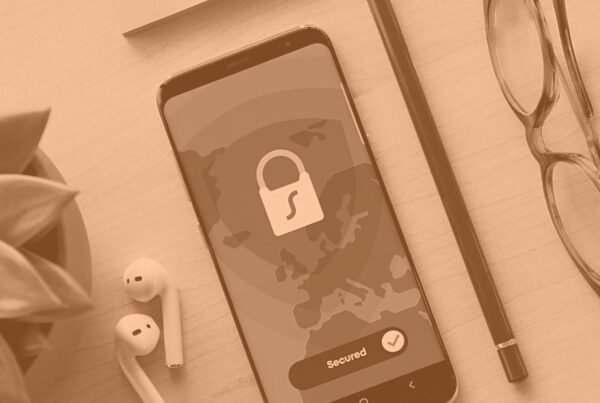Event gamification kind of sucks right now, but it doesn’t have to. Event organizers turn to gamification to try and drive engagement and rally excitement around an event. But more often than not, it’s just a thinly disguised tool to get attendees to do what organizers and sponsors want them to do. That’s why our guest co-host Arianna Black is struggling to find value in event gamification.
In this episode of the Event Brew podcast, Will and Arianna discuss why event gamification in events misses the mark. Spoiler alert–it’s because of misaligned priorities between attendees and organizers. Together, they’ll brainstorm how to implement in-person and virtual event gamification to benefit attendees and organizers authentically. This episode is full of insightful insights and actionable advice.
Arianna’s Gripe with Event Gamification
Arianna is a senior digital event producer, and we’ve recently interviewed her on an episode of #EventIcons about designing the perfect attendee arrival. She starts today’s episode by sharing her gripe with gamification, the reason for today’s topic. “I’m trying to remain open-minded, but in my personal experience, I have found that gamification mostly sucks. It’s flat or lightly disguised as a ploy to get you to do what the organizers and sponsors want you to do. I’m struggling with the idea that there is real attendee value there.”
“I wanted to be open-minded, so I slept on it,” continues Arianna. “I woke up and was thinking about three instances where I’ve seen gamification drive positive behavior and be in the interest of both organizers and participants. Those would be Orange Theory, Peloton, and Fitbit. These metrics align with why you signed up for the services. So I’m thinking about what gamification could look like if it’s in line with the attendees’ reasons for showing up.”
Will agrees. He gives an example of how gamification can be meaningless. “Shout out to Alex Platon. Hubspot’s inbound conference had a tweet leaderboard. Alex live-tweeted every presentation he saw and won Bose headphones. I’m sure the leaderboard drew in many tweets, but how much value was there?”
For Arianna, organizers should build gamification based on the attendees’ primary goals. Speaking from an attendee’s perspective, she says, “You got me into this event community, and I joined because I’m craving to be around the expertise of other event folks. The reason we’re in that container is to spark those new connections. You’re not driving us to do something that furthers your agenda or to a sponsor booth.”
“So, I’m really asking, where does meaningful connection happen in physical and digital spaces? What if there was a way that I’m somehow awarded for making a one-on-one meeting with someone on my calendar? How do we drive the behavior attendees really want? And how do we measure it?” concludes Arianna.
Event Gamification Idea #1: Locked Access
Will shares today’s first solution to gamification that sucks. Will’s inspiration? Role-player games (RPGs). World of Warcraft is an example of an RPG; in them, you often earn access to more abilities as you level up. “I think many modern games are finding out that World of Warcraft was so popular because you get more abilities or new items as you level up your character,” says Will. “Let’s imagine a similar future with gamification. What if a platform figured out that, instead of getting people on a leaderboard, you unlock things?”
“That matters,” Arianna responds. “The second you said ‘unlocked,’ my brain returned to physical space. I’m seeing a venue and special access to a VIP suite for live Q&A with keynote speakers that I only got into because I gathered a certain number of points doing behaviors that furthered everybody’s goals. It’s really about access. So in a physical space, meeting people feels like a limited-time opportunity. Maybe it’s access to the front row seats.”
Building on this idea, Will pushes us to think about event tech and its role in event gamification. “I think to parlay toward an event tech topic, platforms probably need to make it, so there’s more customization around gamification,” explains Will. “For example, I can unlock front-row seats by asking questions that get the most upvotes in a keynote. It might also be that I get access to a VIP thing because I made the most connections during happy hour.”
Arianna agrees. But having thought about physical, in-person events, she pivots to consider virtual event gamification ideas. “The other thing I’m thinking about is, what’s gold in a digital space? A lot of times, it’s the ability to customize your profile or your avatar,” says Arianna. “Maybe I can upload a video introduction rather than just a photo. These are all things that would enhance my goals as an attendee because now you can meet me in a more meaningful way faster.”
Event Gamification Idea #2: Time and Opportunity as Currency
A significant component of the attendee experience is time. Gamification offers tangible or virtual objects like tokens, badges, and avatar costumes as a reward. What if, instead, organizers offer time as the gamification currency?
“So I got a random idea to build on for you,” says Will. “One interesting thing about video games is that as you unlock things, you unlock currency or points. Do you think if, as an attendee, you unlocked currency you could use to buy a cookie at the snack bar (ultimately giving them a prize they want), that it would be successful?”
“As soon as you said currency, I started thinking about my community,” Arianna responds. “I think the most valuable currency is time. These are women who make a lot of money. Money is not necessarily an object, but it does represent access to time with women they think can further their careers. Two things drive my community. One is access to other thought leaders. An hour of time is worth thousands of dollars.”
Arianna continues: “The other thing is, we’re all building brands, right? So maybe, the prize of gamification is an attendee profile on the website that speaks about this attendee and why they’re involved in this event and community. It isn’t with a thousand other attendees, but ‘here are the top three attendees that networked in a meaningful way. Here’s who they are, what they’re doing, and what they’re working on.’”
“One of the things I think a lot of attendees would play for is a one-hour opportunity to have a private call with a keynote speaker.” For Arianna, the most valuable rewards are access to opportunities, which always go back to real humans. “Real humans are at the center of every event,” she concludes.
Event Gamification Idea #3: Customized Rewards
Part of what can make gamification suck is the lack of customization. For example, an event might offer Bose headphones as a reward for the most LinkedIn connections made. But if you already have those headphones, the incentive is lost. Will explores customized rewards as a possible solution.
“One of the hardest parts about this is it all depends on the person,” he says. “What if instead of telling attendees what they’re going to get, you give them a blank box to write what they want? Chances are, you’re probably capable of delivering whatever they ask for. I bet most people would say something like, ‘I would love a call with Gary, the keynote speaker. Can you arrange that?’ They would tell you what they want, allowing you to deliver true personalization. I wonder if that could work.”
“We always think things need to be big and shiny, and you just shared that sometimes value is so subjective that what they ask for might be easier to facilitate than what we were thinking we needed to facilitate,” says Arianna. She gives an example of a custom reward she’d probably go for. “One of the things I’d ask for is, put me in touch with your head of product. Let me have a conversation. That costs them nothing but would be super valuable to me. It actually helps them in the end. So you’re right. Put the attendee back at the center and don’t make assumptions about what’s valuable to other people.”
Final Thoughts
“I love it. Well, I will end it with one last fact,” says Will. “Gamification isn’t the silver bullet when it comes to engagement. It’s hard work. You have to design your content correctly, build gamification systems, and have great event technology. It’s all of this stuff in concert.”
“And it’s people facilitating it; it’s the power of all the humans holding the space,” adds Arianna. “Because gamification is not solved with pre-planning or technology, it’s with live humans at that moment.”
We’re sure we got your heads spinning with in-person and virtual event gamification ideas. And we’d love to hear them! Please send us an email and let us know what you think. As Arianna says, “If listeners have things they’ve seen in the past that either motivated their behavior or incentivized other people, please share. The events world needs to learn.”
Thanks again for tuning in to another episode of the Event Brew podcast. We’ll see you here next time!








